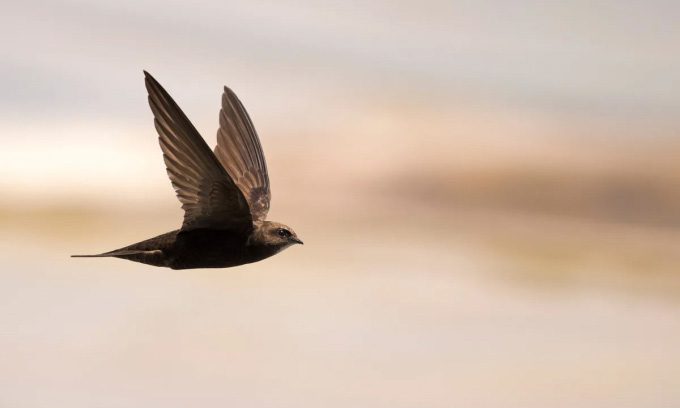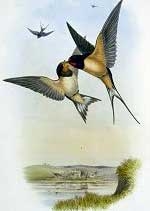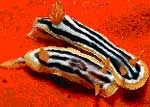The Common Swift (Apus apus) holds the record for the longest flight, capable of flying continuously for 10 months in the air.
Traveling nearly a day by plane is already a long and tiring journey for humans, but this is nothing compared to the abilities of the Common Swift (Apus apus). Many people would start to feel uncomfortable after just a few hours of flying, even while sitting still. However, swifts can spread their wings and remain in flight for up to 10 months continuously.

The Common Swift can fly continuously for 10 months. (Photo: Dilomski).
Since the 1970s, Welsh ornithologist Ronald Lockley suggested that the Common Swift might set a record for flight duration. However, it wasn’t until decades later that a research team at Lund University in Sweden could confirm this. The study was published in the journal Current Biology in 2016.
The team of scientists tracked 13 adult swifts, equipping them with tiny data loggers. These devices contained accelerometers to record flight activity and light sensors to locate the birds. Some swifts were monitored for several years as they migrated from Sweden to the southern Sahara Desert in winter and then returned.
The results indicated that the Common Swift spends most of its time in the air. The monitored birds only remained on land for two months of the year, primarily to breed. Although some occasionally landed briefly during the remaining 10 months, their flying time still accounted for over 99.5%. Three swifts remained airborne for the entire 10 months of migration, an impressive feat considering their small size, each weighing about 40 grams.
The researchers believe that the difference between long-distance flying swifts and those that land may lie in their feathers. Landing swifts do not molt their flight feathers, while those that fly continuously shed and regrow new flight feathers (the long, stiff feathers on the wings and tail that aid in flight).
“The presence or absence of molting indicates minor differences in overall condition or parasitic issues, as well as explaining the flying behavior of individual birds within the species,” explained study author Anders Hedenström.
Researcher Anders Hedenström referred to these data loggers as “little backpacks.” (Photo: A. Hedenström)
How can swifts remain in the air for such extended periods? Physical activity consumes energy, but these creatures have adapted to use relatively little energy during long flights.
“The Common Swift has evolved to become a very efficient flyer, with a streamlined body shape and long, narrow wings that generate lift without much effort,” Hedenström explained. This adaptation helps swifts conserve energy. Additionally, they can quickly replenish energy by feeding on flying insects.
For humans, aside from snacks during flights, sleeping is another way to recharge. However, scientists are not sure if swifts do something similar. “They might behave like shearwaters and sleep while gliding. Every day, at dusk and dawn, swifts fly to an altitude of about 2-3 km. They may sleep while descending, but we are not certain,” Hedenström stated.





















































